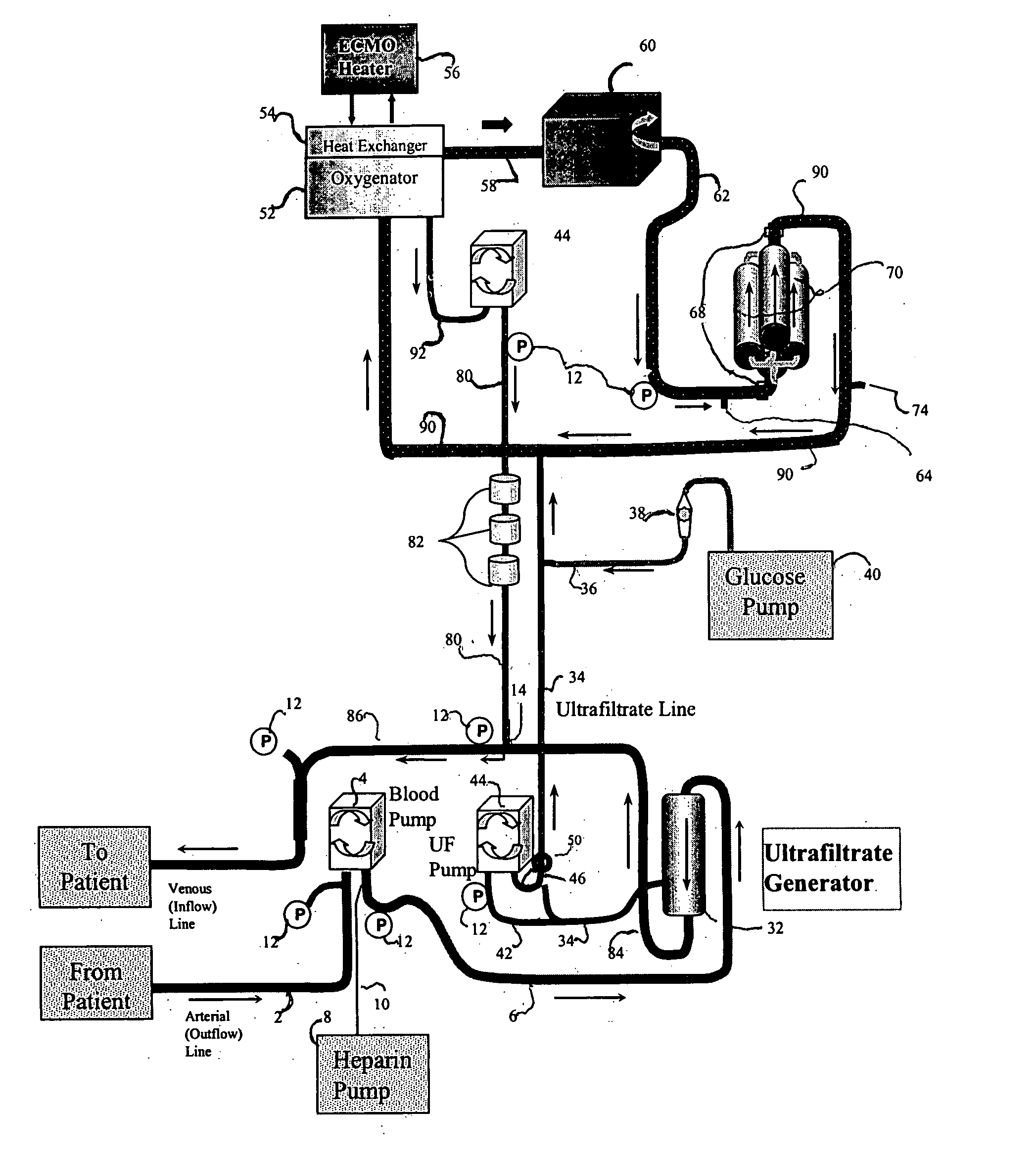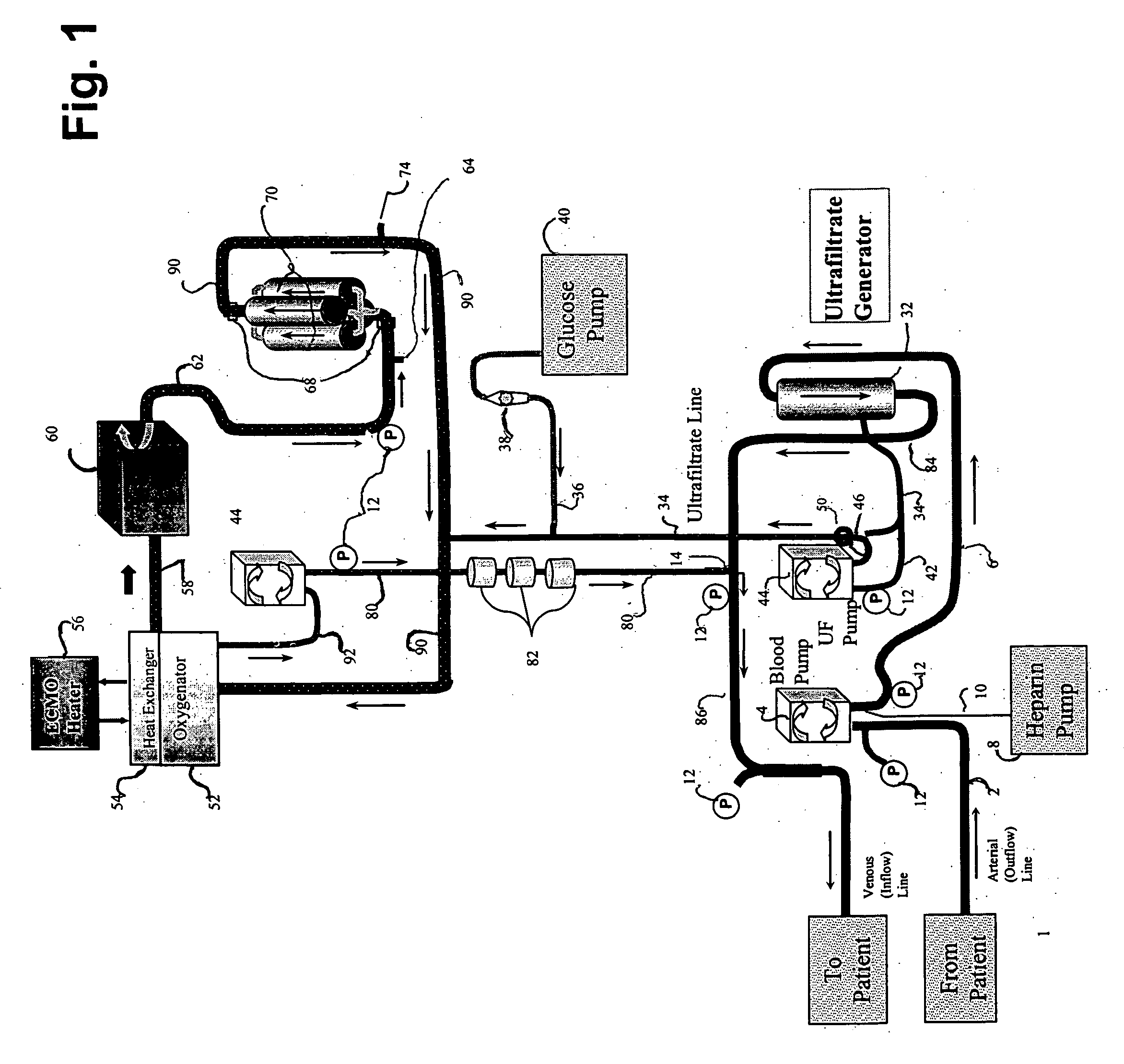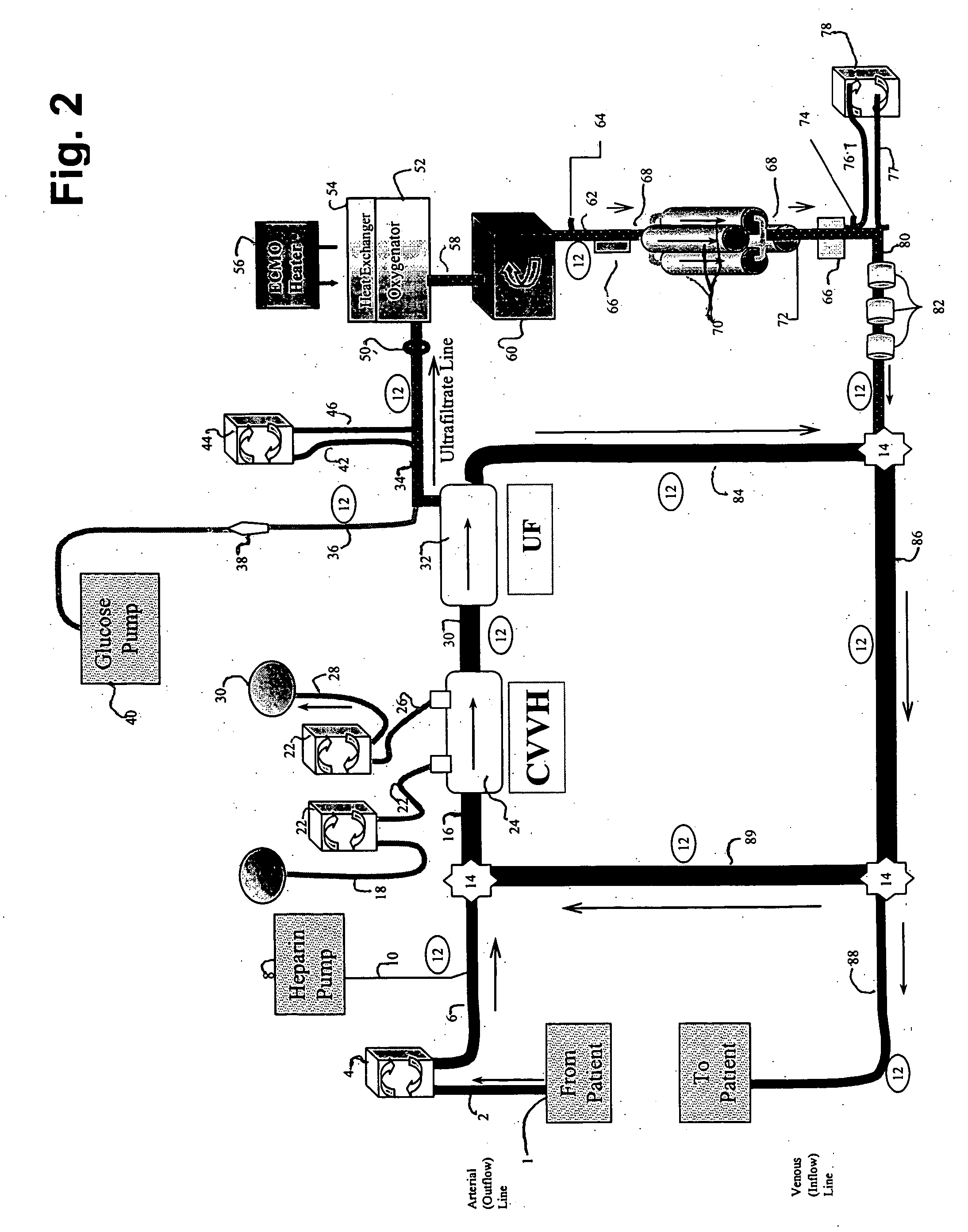Modified organ support devices
- Summary
- Abstract
- Description
- Claims
- Application Information
AI Technical Summary
Benefits of technology
Problems solved by technology
Method used
Image
Examples
example 1
Clearance of Ammonia and Lactate by a Bench-top ELAD™ Device Outfitted with a Hemodialysis Recirculation Loop
[0089] The following example demonstrates the capacity of a continuous veno-venous hemodialysis device (CVVH) to clear ammonia and lactate from the blood flow circuit of a bioartificial liver (BAL) device outfitted with an HD recirculation loop. The experiment was performed on a bench-top version of the ELAD™ liver support device (Vital Therapies, Inc., San Diego, Calif.) outfitted with an HD recirculation loop similar to the one described in FIG. 3, with the following modifications. The arterial line 2 was connected to a Feed Carboy to model the patient's contribution of ammonia and lactate to the system. Instead of ELAD™ cartridges, i.e., the bioreactor 70, the bioreactor inlet 62 and outlet 72 lines were connected to three bags, referred to below as ELAD™ bags, which modeled the bioreactor's contribution of lactate and ammonia to the system. Levels of ammonia and lactate ...
example 2
Higher than Atmospheric Partial Pressures of Oxygen
[0110] The following example demonstrates the beneficial impact of introducing higher than atmospheric oxygen concentrations to a BAL bioreactor.
[0111] An oxygen tank line was connected to an inlet line leading to 4 ELAD™ cartridges. Hepatocytes in the cartridges were grown for 26 days at slightly higher than atmospheric partial pressures of oxygen (oxygen concentration was 21-26%) to allow the cells to reach a cell growth plateau. On days 26, 27, 29, and 31 the percent of oxygen introduced to the line was stepped up to the levels indicated (DO1) in Table 2. Also, on day 26, a saline solution containing ammonia was fed to the cartridges' inlet line to model the ammonia load in UF passing through the cartridges in a clinical BAL device. After passing through the bioreactor cartridges, the oxygen levels in the saline solution leaving the cartridges were measured, (DO2) and saline solution was collected in a waste container. Ammonia,...
example 3
Higher than Atmospheric Partial Pressures of Oxygen and Factor V Production
[0123] To further investigate the beneficial effects of higher than atmospheric partial pressures of oxygen in a BAL device, Factor V production was evaluated.
[0124] Factor V is used as an indicator of liver function in a clinical setting. Compared to albumin, which has a half life of ˜20 days in serum, factor V has a much shorter half life of ˜2 hours in serum. Thus, Factor V can be a more sensitive diagnostic indicator of liver health, especially in a liver that is metabolically unstable, such as a failing liver. For example, factor V levels are a component of the international normalized score (INR), which is a standardized measure that reflects partial thrombin, i.e., clotting time. INR, in turn, is a component of Model End Stage Liver Disease (MELD) score that the United Network for Organ Sharing (UNOS) uses to assess patient mortality risk and to prioritize candidate liver transplant recipients suffer...
PUM
 Login to View More
Login to View More Abstract
Description
Claims
Application Information
 Login to View More
Login to View More - Generate Ideas
- Intellectual Property
- Life Sciences
- Materials
- Tech Scout
- Unparalleled Data Quality
- Higher Quality Content
- 60% Fewer Hallucinations
Browse by: Latest US Patents, China's latest patents, Technical Efficacy Thesaurus, Application Domain, Technology Topic, Popular Technical Reports.
© 2025 PatSnap. All rights reserved.Legal|Privacy policy|Modern Slavery Act Transparency Statement|Sitemap|About US| Contact US: help@patsnap.com



